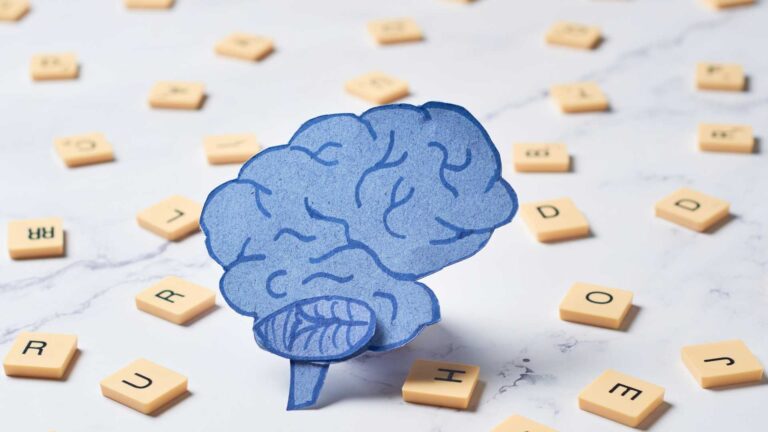Psychiatry and psychology have made significant progress in understanding neurodevelopmental disorders. Among these, autism spectrum disorder (ASD) and attention-deficit/hyperactivity disorder (ADHD) have gained considerable attention due to their prevalence and impact on individuals’ lives. Until 2013, the Diagnostic and Statistical Manual of Mental Disorders (DSM-5) did not allow for a dual diagnosis of ADHD and autism.
With the admission that individuals can have ADHD and autism simultaneously, researchers have noticed a significant overlap between these two conditions. Many kids with autism have ADHD, and vice versa. Although one condition is associated with social deficits and the other with focus problems, their neurological and biological explanations may be closer than previously thought.
At ABA Centers of America, our mission is to provide the best chance for those diagnosed with ASD to succeed and enjoy life to the fullest. This goal involves understanding autism and all its facets, including topics that went unnoticed in the past before widespread autism awareness. This article will explore ADHD and autism, their overlapping symptoms and differences, and the scientific reasons behind their co-occurrence.
1. Understanding Autism Spectrum Disorder (ASD)
Persistent challenges in social interaction, communication, and repetitive behavior patterns characterize autism spectrum disorder. Individuals with ASD may exhibit difficulties in social norms, such as maintaining eye contact, understanding nonverbal cues, and engaging with others’ emotions. Additionally, they often display a preference for routines alongside narrow interests.
Another challenge that many on the spectrum deal with are sensory issues. Loud sounds, bright lights, unfamiliar spaces, and strangers can all lead to sensory overload and cause intense tantrums. ASD is typically diagnosed in early childhood and can vary widely in severity, hence the term “spectrum.” It has no cure, but the challenges that arise can be helped through therapy, the foremost of which is Applied Behavior Analysis (ABA).
2. Exploring Attention-Deficit/Hyperactivity Disorder (ADHD)
Attention-deficit/hyperactivity disorder is a neurodevelopmental condition primarily characterized by symptoms of inattention, hyperactivity, and impulsivity that significantly impact daily functioning. Individuals with ADHD often struggle to focus, organize tasks, and follow instructions. Hyperactivity may manifest as excessive restlessness, fidgeting, or difficulty engaging in quiet activities. Impulsivity, on the other hand, can lead to hasty decision-making and problems making immediate responses. ADHD is commonly diagnosed during childhood and may persist into adulthood, albeit with varying symptom presentations.
3. Shared Symptoms and Overlapping Features of ADHD and Autism
Around 20-50% of kids with ADHD meet the diagnostic criteria for autism. Conversely, 30-80% of children on the spectrum also meet the criteria for ADHD. These statistics mean the two conditions are co-occurring, with several overlapping symptoms such as:
- Impaired Social Skills: Difficulties in social interactions, including challenges in understanding social cues and maintaining appropriate relationships, are observed in both ASD and ADHD. However, the underlying mechanisms and specific manifestations may differ.
- Inattention and Distractibility: Attention difficulties are a hallmark feature of ADHD. However, individuals with ASD may also struggle with maintaining attention, particularly in situations not aligned with their restricted interests or intense focus.
- Hyperactivity and Restlessness: While hyperactivity is a defining characteristic of ADHD, it can also be observed in ASD, although the manifestation may differ. Individuals with ADHD and autism exhibit stimming, a form of self-stimulation that includes repetitive movements such as hand-flapping, rocking, humming, and pacing.
- Executive Functioning Challenges: ADHD and autism involve difficulties with executive functioning, which are cognitive abilities that allow us to plan, organize, prioritize, sustain tasks, manage time, regulate emotions, and engage in problem-solving and decision-making. These higher-order cognitive processes play a critical role in goal-directed behavior and self-regulation. For example, someone with autism or ADHD may forget to brush their teeth or not consider it essential.
4. Differentiating Features
Despite the overlap, there are distinct features that can help differentiate between ASD and ADHD. These differences are crucial for accurate diagnosis and appropriate intervention strategies. Key distinguishing features include:
- Social Communication and Interaction: Difficulties in social reciprocity are more central to ASD. While individuals with ADHD may exhibit impaired social skills, these challenges are typically secondary to attention and executive function rather than core deficits. At the severe end of the autism spectrum, kids may be entirely nonverbal.
- Restricted Interests and Repetitive Behaviors: Restricted and repetitive behaviors are a core feature of ASD, whereas they are not a defining characteristic of ADHD. These behaviors can manifest as intense preoccupation with specific topics, routine adherence, or sensory sensitivities. Individuals with ADHD may jump back and forth from various topics during conversations or daily activities.
- Cognitive Profile: Individuals with ASD often demonstrate unique cognitive profiles, including exceptional attention to detail, visual-spatial skills, and pattern recognition. This is where the concept of “savants” comes from, individuals on the spectrum who exhibit extraordinary abilities. In contrast, individuals with ADHD show more generalized cognitive difficulties, particularly in sustained attention and working memory.
- Treatment: Although various behavioral interventions exist in treating ADHD, a prevalent method involves medication. Medical professionals prescribe stimulants like methylphenidate and amphetamines to manage the ADHD symptoms of inattention, hyperactivity, and impulsivity. These medications target neurotransmitter imbalances, primarily involving dopamine and norepinephrine. The same is not true for autism. Although medication may address co-occurring conditions, it is not a primary therapy. Behavioral interventions like ABA therapy are far more common and effective for managing the challenging symptoms of ASD.
5. Scientific Reasons for the Overlap
The reasons behind the overlap between ADHD and autism are under exploration. Multiple factors, including genetic, neural, and environmental influences, likely interact to contribute to the co-occurrence and shared features observed in these conditions. While definitive answers remain elusive, researchers have proposed several hypotheses:
- Shared Genetic Factors: ADHD and autism have a significant genetic component. Both disorders are associated with several genes involved in brain development, neurotransmitter regulation, and synaptic connectivity. Some of these genes include those related to dopamine signaling (DRD4) and synaptic adhesion molecules (NRXN1). The presence of overlapping genetic risk factors suggests that shared genetic vulnerabilities may contribute to the shared symptoms and co-occurrence.
- Neural Connectivity and Brain Structure: Studies using brain imaging techniques like MRIs have revealed differences in neural connectivity and brain structure in individuals with ADHD and autism. For example, both conditions have shown altered connectivity within and between brain regions involved in social cognition, attention, and executive functions. Specific differences in the structure and functioning of areas such as the prefrontal cortex, anterior cingulate cortex, and striatum are present. These neural differences could underlie the shared and unique symptom profiles observed in ASD and ADHD.
- Neurotransmitter Imbalances: Neurotransmitters, such as dopamine and serotonin, play essential roles in regulating attention, mood, and behavior. The dysregulation of these neurotransmitters is apparent in both ADHD and autism. Imbalances in serotonin are associated with impulsivity and repetitive behaviors observed in ASD and ADHD. The shared involvement of these neurotransmitters may partially explain the overlapping symptoms and co-occurrence.
- Developmental Trajectories: Another potential reason for the overlap between ASD and ADHD is their developmental trajectories. Early childhood is a critical period for brain development, and disruptions during this time can contribute to the emergence of neurodevelopmental disorders. Alterations in neural circuitry and connectivity during infancy may lead to impairments in social communication, attention regulation, and executive functions, which are central to both disorders.
ABA Centers of America and Autism
If your child or a loved one exhibits the behaviors described above, the first step to understanding and helping them is testing. At ABA Centers of America, we can help you during every step of the autism testing process and reach the correct diagnosis. We also specialize in Applied Behavior Analysis, the gold standard of autism care guaranteed to help individuals on the spectrum grow in unprecedented ways.
ABA can help with daily living, interpersonal relationships, communication skills, coping mechanisms, and academic performance. Call 844-923-4222 or message us online to ensure your loved one leads a happy and independent life.







